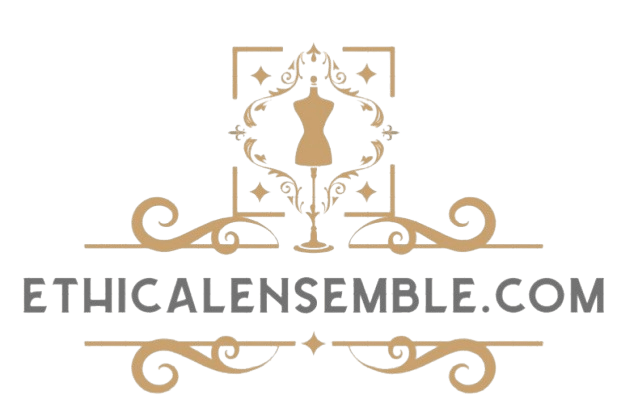How to Identify Quality Secondhand Clothes
In a world that s increasingly prioritizing sustainability, buying secondhand clothes is not just a wise choice; it’s a chic and environmentally conscious decision!
Buying secondhand reduces waste and offers financial advantages.
Navigating the secondhand market can be a challenge. This guide equips you with everything you need to maximize your thrift store excursions!
Uncover the secrets to finding high-quality pieces that resonate with your style while saving money and the planet.
Contents
- Key Takeaways:
- Benefits of Buying Secondhand Clothes
- Factors to Consider When Shopping for Secondhand Clothes
- Inspecting Secondhand Clothes for Quality
- Where to Find Quality Secondhand Clothes
- Tips for Making the Most of Secondhand Shopping
- Frequently Asked Questions
- What key factors should I look for when trying to identify quality secondhand clothes?
- How can I tell if a secondhand clothing item is made from high-quality fabric?
- Is it important to check the stitching when inspecting secondhand clothes?
- What are some signs that a secondhand clothing item may not be of good quality?
- Can branded secondhand clothes be considered high-quality?
- Are there any red flags to look out for when buying secondhand clothing?
Key Takeaways:
- Buying secondhand clothes benefits both the environment and your wallet!
- Consider quality, fit, and style when shopping for secondhand clothes for a satisfying purchase.
- Inspect secondhand clothes for signs of wear and tear, and assess material for quality.
Benefits of Buying Secondhand Clothes
Buying secondhand clothes enhances your style while playing a crucial role in sustainable fashion. It helps the environment by reducing waste and extending the lifespan of garments!
Shopping secondhand means you can choose eco-friendly options and enjoy financial perks with affordable prices on quality items.
This approach allows you to create a collection that reflects your unique tastes while fostering a more sustainable wardrobe.
Environmental and Financial Advantages
Embracing sustainable fashion through secondhand shopping benefits the environment and offers significant financial advantages!
By opting for secondhand items, you reduce the staggering 92 million tons of textile waste generated globally each year. Shopping secondhand lowers the carbon footprint tied to manufacturing in the fast fashion industry.
Research shows that buying secondhand can be up to 66% cheaper than new clothing, allowing you to save hundreds each year!
Factors to Consider When Shopping for Secondhand Clothes
When shopping for secondhand clothes, consider factors that enable you to make informed purchases, especially regarding quality and fit.
Understanding the fabric composition and the condition of each piece ensures longevity. A strategic approach to thrift shopping enhances your experience!
Quality, Fit, and Style
To build a sustainable wardrobe with high-quality garments, recognize the importance of quality, fit, and style.
Start by evaluating the fabric type whether it s soft cotton, luxurious silk, or durable wool. This helps gauge the longevity and comfort of each piece!
Garment fit is crucial; even the most stunning item can fall flat if it doesn t suit your shape. Accurate measurements are essential for achieving that perfect fit!
Inspecting Secondhand Clothes for Quality
Inspecting secondhand clothes for quality safeguards your investment’s longevity and allows you to appreciate each piece’s intricate details!
Pay close attention to fabric tags, sewing quality, and overall condition. Watch for signs of wear like pilling and stains to make informed choices in line with your sustainable fashion goals!
Signs of Wear and Tear
Recognizing signs of wear and tear is essential for determining quality, influencing longevity and usability.
Look for fraying seams and discoloration that may indicate the garment’s condition.
Checking for Stains and Odors
When inspecting clothes, check for stains and odors, as they greatly influence your purchase decision.
Spot potential stains and consider pre-treating them or airing out garments to enhance quality!
Assessing Material and Construction
Assessing the material and construction of secondhand clothes is crucial for ensuring durability!
Different fabric types like cotton, linen, wool, and silk impact longevity and comfort. Pay attention to sewing quality and garment fasteners like buttons and zippers!
Where to Find Quality Secondhand Clothes
You can find quality secondhand clothes in various places. Explore thrift stores, luxury boutiques, and online consignment platforms!
Thrift Stores, Consignment Shops, and Online Platforms
Thrift stores and consignment shops each provide opportunities to uncover secondhand clothing aligning with sustainable fashion principles!
These venues offer affordable, eco-friendly alternatives to fast fashion, catering to your environmentally conscious sensibilities!
Tips for Making the Most of Secondhand Shopping
To elevate your experience while shopping for secondhand clothes, adopt simple thrift tips to enhance your excursions!
Shopping Strategies and Bargaining Techniques
Developing effective shopping strategies, knowing the best times to shop, and honing bargaining techniques can transform your experience!
Engaging with store staff enriches your shopping journey and can provide great tips into upcoming sales!
Frequently Asked Questions
What key factors should I look for when trying to identify quality secondhand clothes?
Look for fabric, stitching, condition, and brand to assess quality.
How can I tell if a secondhand clothing item is made from high-quality fabric?
High-quality fabric typically feels soft, smooth, and durable.
Is it important to check the stitching when inspecting secondhand clothes?
Yes! Look for even and consistent stitching.
What are some signs that a secondhand clothing item may not be of good quality?
Watch for visible stains, loose buttons, or frayed fabric.
Can branded secondhand clothes be considered high-quality?
Not necessarily! Inspect the fabric and stitching regardless of the brand.
Are there any red flags to look out for when buying secondhand clothing?
Yes! Strong odors, excessive wrinkles, or lint can indicate poor quality.
Start your thrift journey today and discover amazing finds!
